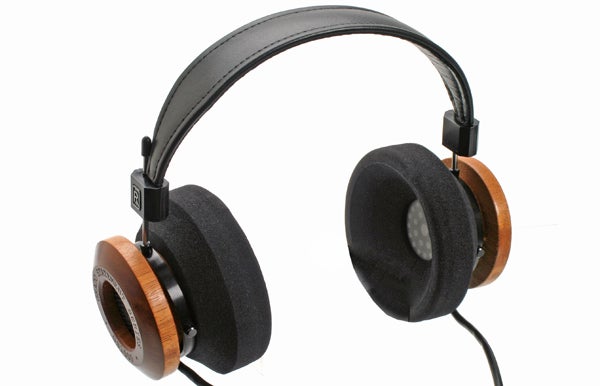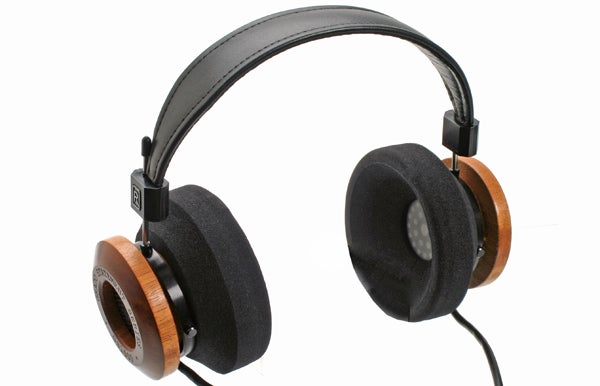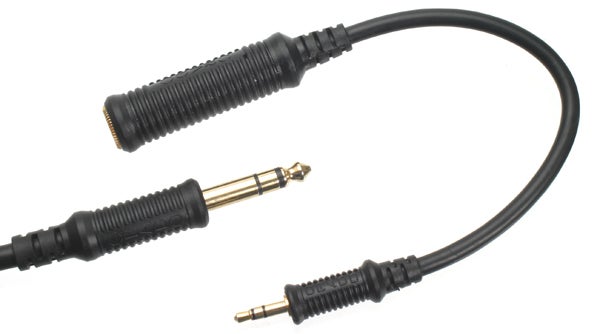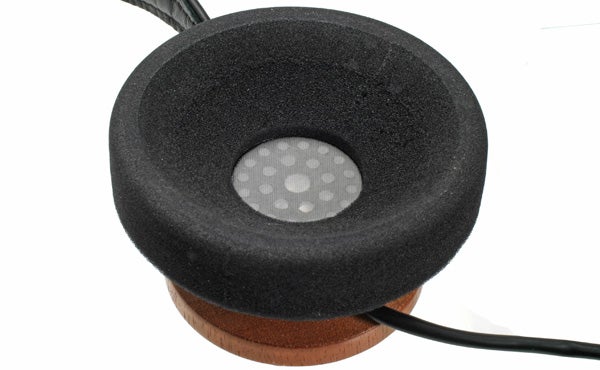Grado GS1000i Review
Grado GS1000i
Can you justify spending £1000 on headphones?

Verdict
Pros
- Lightweight
- Comfortable
- Crystal clear sound
Cons
- Expensive
Key Specifications
- Review Price: £989.00
- Wood construction
- Large foam ear cups
- 312g weight
- 6.3mm jack
- 3.5mm converter
- 8Hz - 35KHz frequency range
Spending a thousand pounds on anything is an important decision for all but those with platinum records, a rabble of PAs or a Scrooge McDuck-style money-filled swimming pool. The Grado GS1000i headphones are not an impulse buy, but they are recognised by many as some of the best headphones in the world. But are they worth a grand, and should you save up a few more pennies – well, a lot more – and go for the PS1000 pair instead?
The Grado GS1000i are wooden headphones, and close relatives of Grado’s currently top-end PS1000 model. Those pricier cans are weighed down by great hunks of metal that form the end of each earpiece – not so here. These headphones are very light at just 312g, which comes as a surprise given their large size.
The body of each headphone is fairly small though. It’s the giant foam pads that make the GS1000i look so large. They rest against your head, around each ear to distribute the minimal weight of these headphones evenly, and keep pressure away from your ears. As such, they’re very comfortable, indeed their presence is barely perceptible once on your bonce.
Up top, the headband uses a more minimalist design. It’s a non-folding leather band that sits directly on the top of your head, with little padding. However, since there’s not much weight to the package they’re still eminently comfortable to wear all day.

The mix of foam padding and the open-back design means your ears don’t get hot with wear either, which you would experience more with leather-padded or closed-back headphones. Each foam pad can be removed from the driver housing easily; they’re the only bit that are designed to be perishable. Treat them well and we’d imagine they’d last for years though, as the foam used is of top quality, and hardier – being of higher density – in the parts that come into contact with your face. A replacement pair costs £56.The only downside is they can feel a little scratchy. It’s not enough to be uncomfortable but it is noticeable as compared to a soft leather finish.
In silhouette, the Grado GS1000i look very similar to the more expensive PS1000 headphones, but wearing them is a completely different experience. Where the PS1000 are heavy to regularly fall off your head if you’re not careful, these are almost worryingly light by comparison. The quality of construction is identical, but the materials used mean they don’t have the industrial, heavyweight vibe of their more expensive cousins. Which you’d prefer to own is a point of opinion, but we know which we’d rather wear for a five-hour stint.
They may be comfortable but aesthetically the GS1000i take a little getting used to. They dominate your head like a mind control device from a 50s sci-fi movie, and are sure to attract comments from just about anyone that sees you wearing them. The same is true of the Grados’ main rivals though. The Sennheiser HD800 look like something from a 90s sci-fi flick (seeing a trend here yet?) and the Ultrasone Edition 8 have at least a toe in the 80s look. So, not only do you have to pick the sound you want, you have to pick the decade too.
Grado calls the GS1000i its Statement headphones, and the “i” in its product name stands for improved – over the original GS1000 headphones released in 2006. This newer model looks similar but offers different transducers for what Grado claims is better overall sound quality.
For your grand, you get excellent sound quality to be noted for its detail and insight across the frequency spectrum, across all volumes – this isn’t a set you need to listen to at high volumes to get the most from. The sound isn’t hugely beefy as we heard in the PS1000 – in this respect the GS1000i are more what we’ve come to expect from an audiophile set. The bass is there, it’s just lean and restrained. But it is also taut and punchy.

Dynamic and exciting but not out to impress with cheap thrills, the crystalline GS1000i sound demands an attentive ear for a full appreciation. The famous fab Grado mid-range is here, giving you that insistent forward sound, but the effect is less evident here than in some other Grado models.
The GS1000i can reproduce incredible detail, excelling at delivering the
textures of stringed instruments and voices to your ears, like
exquisite silverwear atop a silk cushion. With a high-quality source, these headphones are hard to beat, at any price. Their deep insight means that not only do you need to listen
actively to appreciate these cans (calling them cans even feels
derogatory), you also need a quiet environment – more so than the warmer-sounding PS1000.
If you put the GS1000i sound on a strict gym regime, to build up its bass and low-mids, you’d end up with something approaching the PS1000 sound. The PS1000 headphones are warmer, bassier and more powerful – but remember they cost around £800 more too. While we’d argue they are categorically better, it’s a case of style too, not just ability. The GS1000 are less aggressive, more genteel performers.

With completely open backs – there’s only a grille to protect the speaker housing – these headphones leak sound and don’t protect you from the noises of the outside world, which is always on-hand to ruin your listening pleasure. If your double glazing can’t quite keep out the sound of a nearby train station or pub, or your neighbours argue all night long, you won’t get the best out of the Grado GS1000i headphones. If escaping these woes is your aim, you’d be better off with a closed pair of headphones, the Denon AH-D7000 being the obvious alternative choice at this level. Sacrificing sound quality over such mundane issues when spending a grand seems ridiculous though, so be sure your listening area is up to the task.
The other clear rivals to the Grados are the Sennheiser HD800 headphones, the “90s sci-fi” beasts to the quaint 50s sci-fi look of the GS1000i. Both offer superb clarity and detail, but the Sennheisers can be labelled as slightly clinical in their approach – the Grados cannot.
Verdict
If you’re willing to spend £1000 on headphones, you’ll hopefully have already put some thought into what sets you should be looking at. There’s no doubting the GS1000i are one of the best, with superb levels of detail on-hand and far greater comfort than you get with the more expensive PS1000 pair. A keen ear and a quiet listening environment are key to getting the most out of these headphones, but if you have those vital ingredients and a love of great sound, they’re worth the investment.
Trusted Score
Score in detail
-
Value 7
-
Design & Features 8
-
Sound Quality 9
Features
| Type | Open Air (Circumaural) |
| Wireless | No |
| Noise Cancelling | No |
| Microphone | No |
| Inline Volume | No |
| Number of Drivers (Times) | 1x |
| Modular Cabling | No |
| Remote Control | No |
| Frequency Range | 8-35,000Hz |


